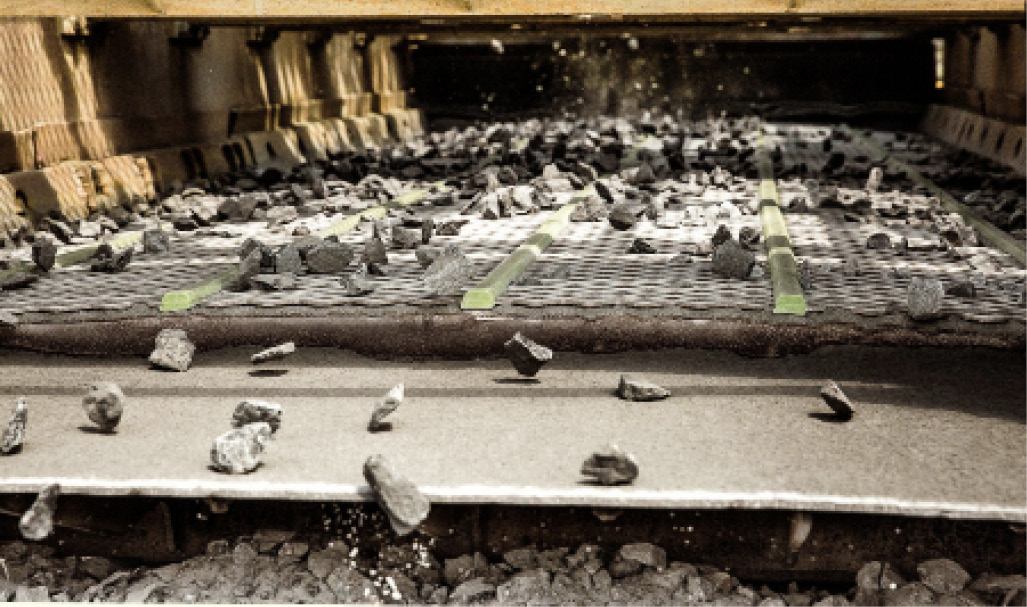Inefficient Screening Silently Tallies Up Costs As Material Is Needlessly Recirculated Through The Crusher.
By Serge Raymond
Efficient crushing is a critical factor in a screening plant’s profitability. Crushers are a significant investment, both to own and to operate, and the entire process depends on the crusher to work effectively.
But what often goes unnoticed – and frankly, undiagnosed – is the effect that poor screening can have on an operation’s profits. Inefficient screening silently tallies up costs as material is needlessly recirculated through the crusher.
To truly maximize a processing plant’s efficiency, this unnecessary crushing must be minimized or eliminated. To do this, plant operators must understand how recirculation could be hurting their profitability, and what they can do to minimize it.

Material Recirculation
If the screen box is not doing its job well, material that should have fallen through the screen media ends up circulating back to the crusher to be crushed again. Recirculation is hard to detect and even harder to measure, making it difficult to put a value on. It can wreak havoc on an operation’s bottom line but never be identified as the problem. There are a number of ways it can cost a plant money.
The obvious consideration is wear and tear on the crusher. Crushers are expensive to fix and replace – up to three times the cost of replacing a screen box. Material recirculated through the crusher accelerates the machine’s retirement, bringing that replacement expense to bear more quickly than would have been required.
Unnecessary work for the crusher also hastens its service intervals and causes wear parts to deplete more quickly. No matter the crusher type – impact, cone or jaw – material recirculation causes the wear parts to be replaced more often, and without benefit of adding revenue to the business.
One of the biggest issues of recirculation is lost revenue. This pattern reduces the amount of near-size material – the most valuable to an operation – being produced. The producer winds up taking a double hit – one from the expense of crushing the material a second time, and another from the loss in revenue and reputation from producing less near-size material.

Preventing the Problem
Screen media choice is often the single biggest factor in improving screening efficiency. Where most media falls short is in delivering efficient stratification. Some producers use high-vibration wire screens, which are strategically designed to promote material stratification and offer exceptional screening performance.
High-vibration screen media magnifies the screen box’s own vibration. Independently vibrating wires run along the full length of the screen media, increasing the vibration frequency.
Consider that a typical screen box vibrates between 600 and 1,200 strokes per minute, with high-frequency machines reaching in excess of 4,000. Because high-vibration screens vibrate independently of the screen box, the wires can reach frequencies of 6,000 to 10,000 cycles per minute – up to 13 times greater than that of a standard vibrating screen with traditional media.
This high vibration accelerates material stratification, causing coarse material to rise to the top of the material bed faster. Fines and near-size material comes in contact with the screen much faster. This combined with a wide material spread – again, thanks to the extreme vibration – puts fines and near-size material in contact with the screen for a much longer time period, drastically improving the screen’s effectiveness and reducing the amount of material sent back to the crusher unnecessarily.
High-vibration screen media can be a game-changing solution for operations struggling with productivity. Recirculation is a frustrating drain on efficiency, racking up crushing costs and diminishing the quality of the final product. Reducing or eliminating recirculation with more efficient screening is a relatively low-investment solution for a potentially high-dollar problem.
Serge Raymond is a product specialist at MAJOR.
